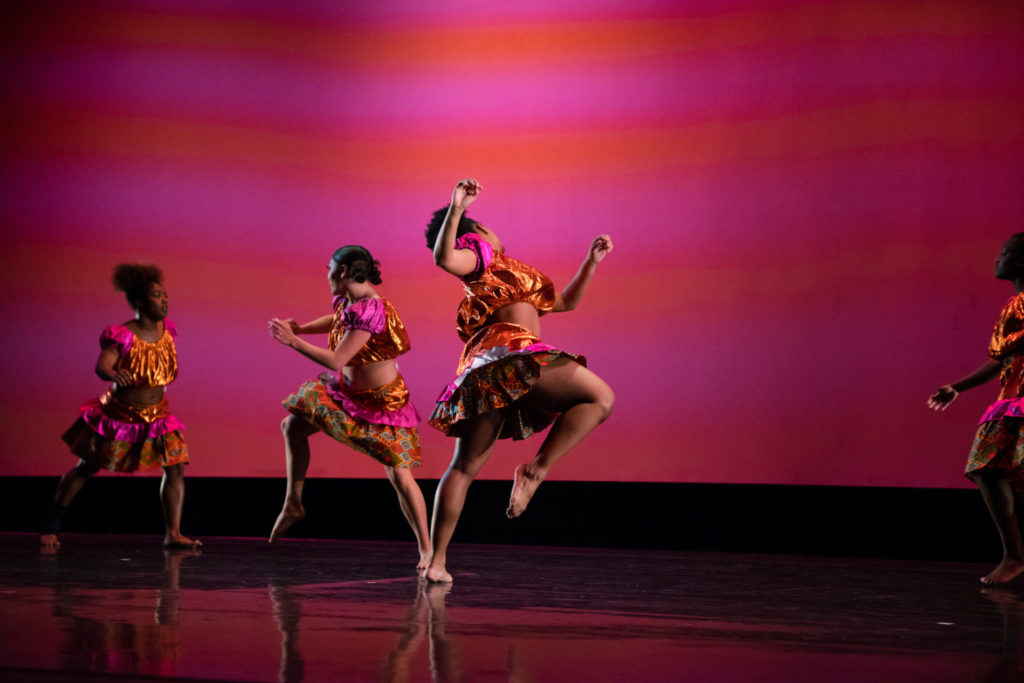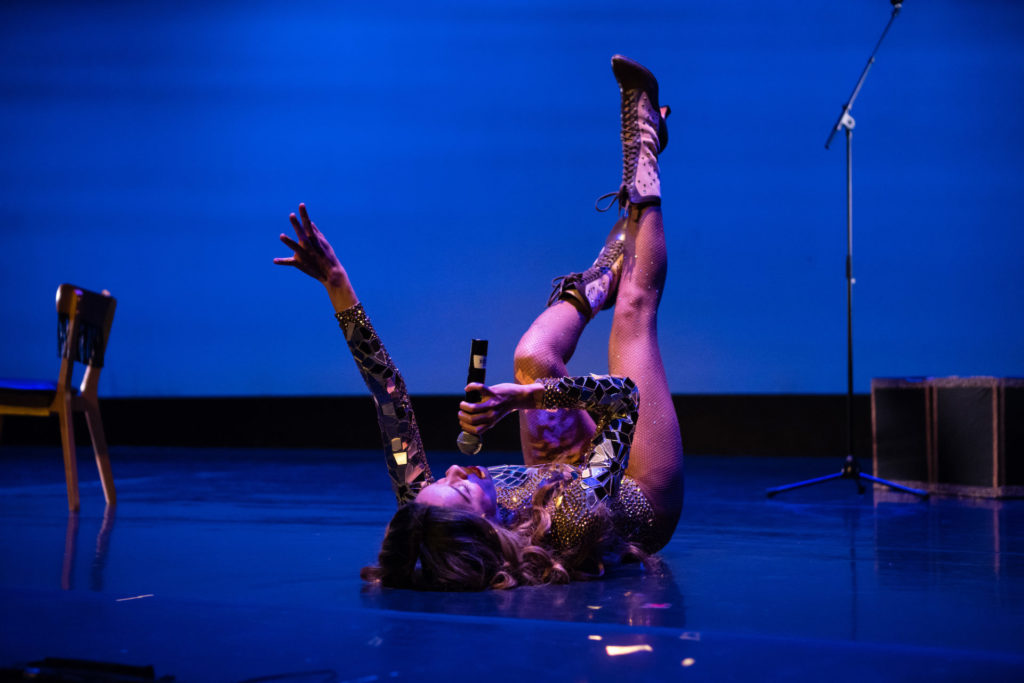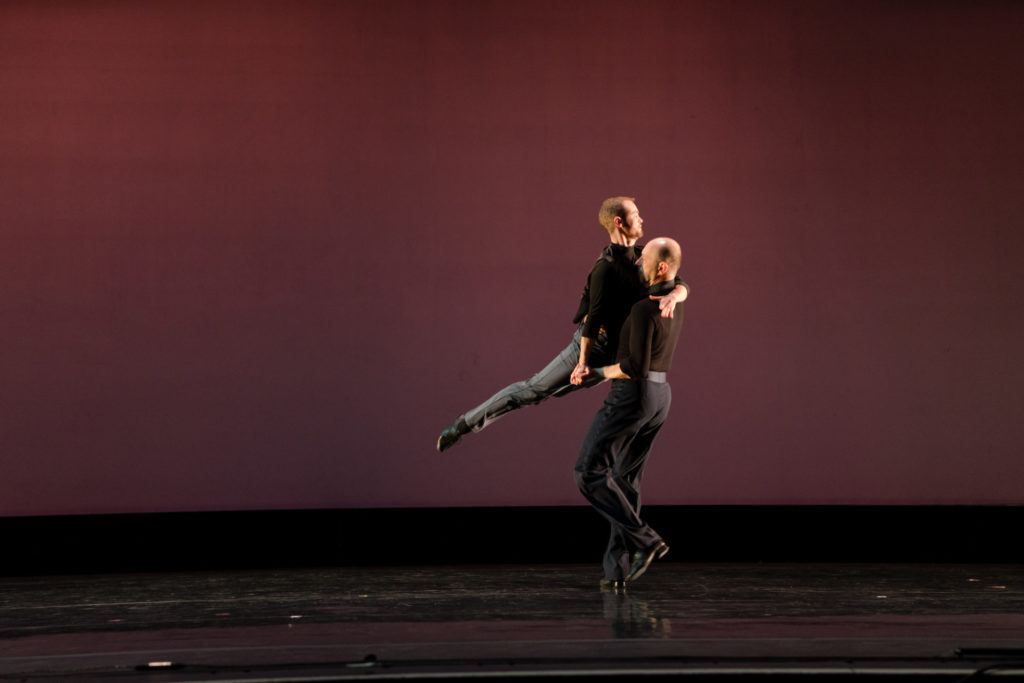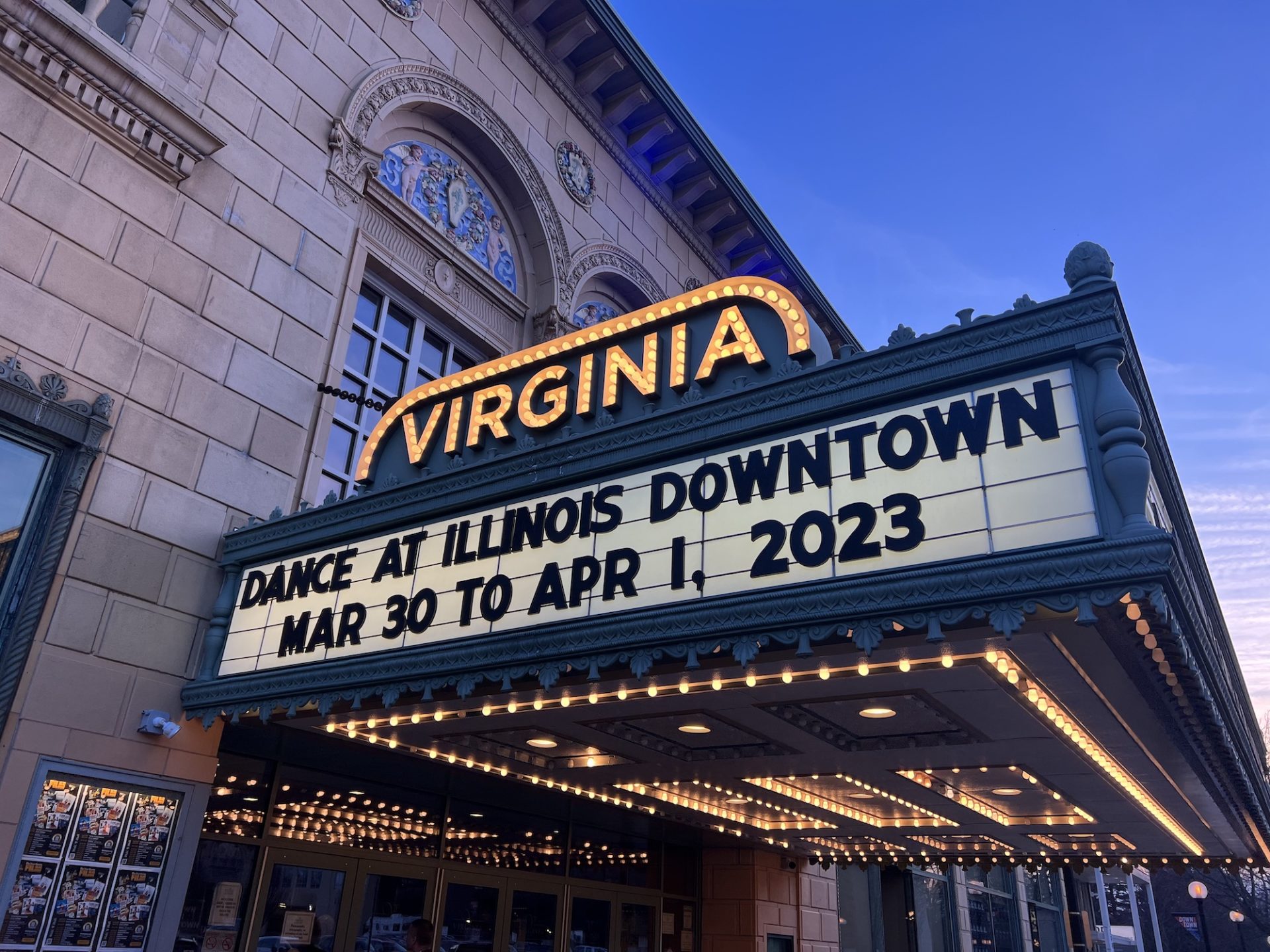This year’s Dance at Illinois Downtown, a celebration of dance put on by faculty, guests, and current and former students from the University of Illinois’ dance department, marks the first time the showcase has ventured out of the Krannert Center for the Performing Arts. The historic Virginia Theatre provided the perfect backdrop for this year’s dance extravaganza: a series of performances that ranged from vignettes that evoked frolicking through a prairie, to a same-sex ballroom dance pair, African-inspired dancing to live drummers, and a one-woman exploration in movement and monologue.
The show opened with a land acknowledgement read by new faculty member Alexandra Barbier, clad in an extravagant cape, glitter tights, and six-inch heels. As she left the stage, the first performance began, Danse Soirée de Bonbons- Part One, a series of four vignettes choregraphed by Concert Director and U of I Professor Rebecca Nettl-Fiol and performed by seven dancers to an array of French melodies by Jacques Brel. The first vignette featured three dancers in a light number that evoked dancing in a meadow and served as a lovely opening to the evening.
At the start of the second vignette of Danse Soirée de Bonbons, performed to Au Suivant, Kato Lindholm, the coach of U of I’s competitive ballroom dance team, entered the stage alone. He was joined on stage by Alex Tecza, a professional ballroom dancer and current master’s student in the dance department. From their first synchronized movement, even before they came together in a traditional ballroom dance hold, it was clear the audience was in for something remarkable. The pair’s perfectly executed movements across the floor were a testament to their decades-long partnership. The end of their routine was met with the first cheers from the audience of the evening.
In the Weeds opened with the sound of rattles reminiscent of snakes. A dancer in ballet shoes, velour leggings, and a loose tank top entered the stage solo, moving her arms in a way that felt as though she were calling snakes or other creatures to her. I was sad to see her leave the stage and was left wanting more of her captivating movements. The rest of the piece saw dancers moving fluidly on and off the stage, with some rolling around and crawling on the floor. The entire routine certainly fulfilled the promise of the title.

The third piece, Women Gather (1990) was choreographed by the late Kariamu Welsh. A set of three drummers performed on the side of the stage while a group of female dancers donning matching crop tops and skirts in pink, orange, and African prints entered the spotlight. The women began the performance complimenting each other’s matching outfits. The energy from the dancers was palpable, and it was instantly clear this was going to be a good time. The rhythm and dancing had members of the audience tapping along to the beat. Each time the dancers, who alternated between synchronized movements and individual solos, hit a pose on beat with the drum was a moment of pure perfection. The performance was full of attitude and playful strutting; it was something even non-dance enthusiasts would appreciate and gladly return to watch multiple times. One of the drummers was noticeably smiling watching the dancers the entire routine as well — it was wonderfully executed and true joy to witness.

In the final piece before the intermission, Barbier returned to the stage for “I’ll never be Beyoncé,” a performance that is part of her larger body of work, Stations of Black Loss. Barbier began by joking that the audience knows she is not Beyoncé since we did not spend $2000 to see her. The entire performance saw Barbier moving fluidly all over the stage, at times climbing a ladder or bending backwards off of a chair, all while recounting stories from her own life that revolved around her contending with her own internalized anti-Blackness. One such moment saw her telling how in childhood, a boy on AOL messenger informed her she would need to someday get a nose job in order to pass as white, something that she says only did not happen because she has never been good at saving money (cue audience laughter). Barbier’s piece was a powerful study of movement and identity and her own personal journey towards self-love.
The second half of the show featured three performances: Danse Soirée de Bonbons- Part Two, Haba Na Haba Hujaza Kibaba, and Can’t Stop What’s Coming. Danse Soirée was a beautiful and rich performance of three vignettes, including welcoming back to the stage Lindholm and Tecza, this time in matching velvet suit coats and black turtlenecks, for a breathtaking and moving ballroom routine.

Haba Na Haba Hujaza Kibaba was a highlight of the second half of the show. It opened with a projection on the screen of a bucket with African Symbols being filled with water. In addition to large synchronized groups, there were several captivating duets and solos. The piece, which at one point featured projections of George Floyd’s picture, is described in the program as using African dance “to speak of the question, What happens when an oppressed people’s patience expires?”
The final piece, Can’t Stop What’s Coming, was choregraphed by Paige Cunningham-Caldarella in collaboration with the dancers. The ten-dancer ensemble wore neon outfits and performed to what is credited as “10 Hours of Ceiling Fan Noise for Bedroom Fan Sounds for Sleeping.” The choreography was enthralling, a bit chaotic, and a great close to the show.
Dance at Illinois Downtown was a fantastic and enjoyable way to spend an evening that rarely felt like a dance department’s end of year showcase. Many of the performances were enthralling and memorable and a great testament to the dancers’ dedication to their craft.








